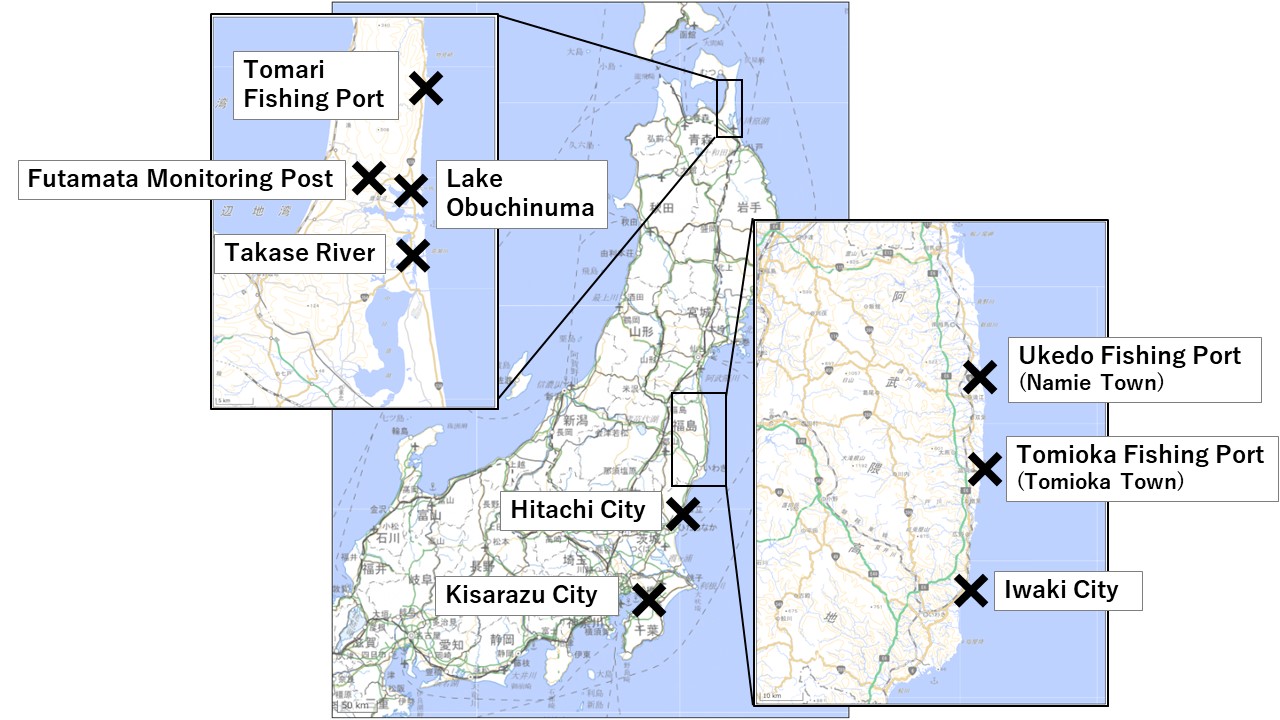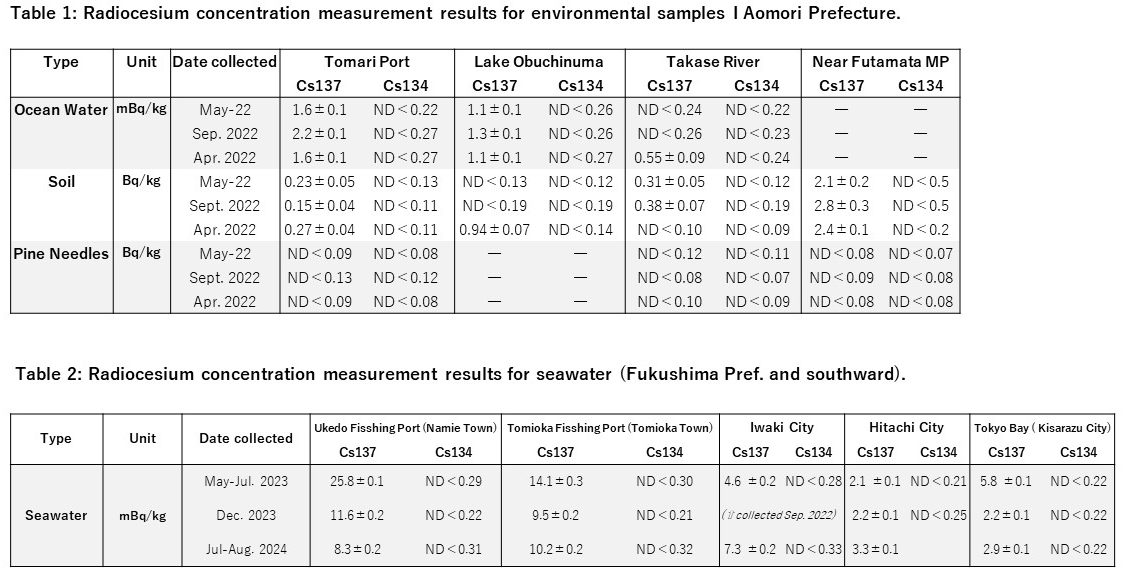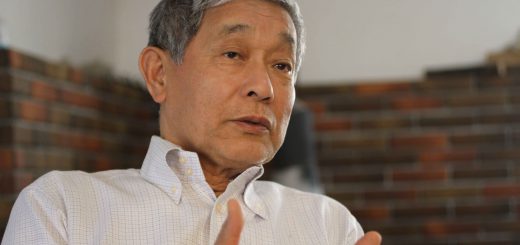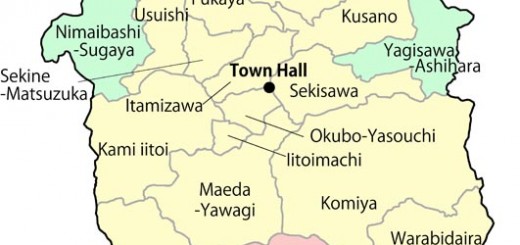Report on Radioactive Cesium Concentrations in Seawater and Other Media
by Tanimura Nobuko
Artificial radioactive materials released from Tokyo Electric Power Co.’s (TEPCO’s) Fukushima Daiichi Nuclear Power Station (NPS) are still being detected in the environment over a wide region. They are blown by wind and driven by rain, draining into the sea or accumulating in certain places, so measurements must be taken to get a grasp of the current situation. The Citizens’ Nuclear Information Center (CNIC) has been measuring radioactive cesium concentrations in seawater, lake water, food and soil. In this issue, I would like to report the measurement results for the period of 2022 to 2024. In recent years, special attention has been paid to environmental surveys around the Fukushima Daiichi NPS, in seawater off the coast of Ibaraki Prefecture and in Tokyo Bay, and around the Rokkasho Reprocessing Plant (Rokkasho plant) in Aomori Prefecture, the full-scale operation of which has been repeatedly postponed. We hope to get an overview of the effects of radioactive contaminated water (ALPS treated water) released from the Fukushima Daiichi plant, which is undergoing decommissioning, and the changes that occur around the time when the Rokkasho plant begins full-scale operation.
・Sampling
The sampling locations are shown in Fig. 1. In the case of seawater and lake water, 40 liters were collected for each sample by casting a bucket with a rope from the shore. In Rokkasho Village, Aomori Prefecture, pine needles and soil were also collected as measurement samples with the cooperation of the local people. Soil to a depth of up to 5 cm from the surface was collected.
・Sample Pretreatment and Radiation Measurements
Since radioactive cesium concentrations in environmental water samples are often small, the cesium is first concentrated prior to gamma-ray measurement. After filtering and acidifying the water samples, ammonium phosphomolybdate (AMP), which selectively absorbs cesium, was added. The mixture was stirred and allowed to stand for 20-24 hours, after which the AMP precipitate was recovered by suction filtration. In this way, each 40-liter sample could be reduced to approximately 10 grams. Each AMP-concentrated sample was enclosed in a U8 container (50 mm diameter x 60 mm height), and gamma-ray measurement was performed for 72 hours.
Two liters of pine needles were collected at each sampling point. They were finely crushed and allowed to dry naturally indoors (23ºC, about 50% humidity) for more than 24 hours, after which gamma-ray measurement was performed for 40 hours. Similarly, 2 liters of soil were collected at each sampling point. The samples were dried in a drying oven at 85 ºC for 7 hours, after which gamma-ray measurement was carried out for 2 hours. In both cases, the samples were enclosed in a 2-liter Marinelli container for measurement.
The gamma-ray measurements were carried out using a germanium semiconductor detector owned by the NPO Shinjuku Yoyogi Citizen Monitoring Center.
・Measurement Results
Tables 1 and 2 show the measurement results.
Cesium-137 concentrations per kilogram of seawater (or lake water) in Aomori Prefecture were no greater than 2.2 millibequerels (mBq). This can be said to be similar to levels before 2010. Around the Fukushima Daiichi NPS, on the other hand, 8.3-25.8 mBq was detected in the seawater at Ukedo Fishing Port (5 km north of the plant) and Tomioka Fishing Port (8 km south of the plant). Thus the impact of contamination from the Fukushima nuclear disaster was confirmed even now, after more than 10 years have passed. The highest concentration detected was in sea water at Ukedo Fishing Port in May 2023. The sea water sampled in Tokyo Bay showed 2-6 mBq, also a higher concentration than before the accident (1.1 mBq/L* in 2006). All pine needles from Aomori Prefecture measured below the detection limit and the soil measured less than 2.8 Bq/kg. The soil contamination there can also be said to be within the same range as before the Fukushima nuclear accident.
As decommissioning work at the Fukushima Daiichi NPS has proceeded, radioactive contaminated water has been released into the ocean starting from August 2023. Our measurements thus far have not confirmed higher concentrations of cesium-137 in seawater around the time of release.
Beta-ray nuclides such as tritium cannot be measured using gamma-ray measurement with a germanium semiconductor detector. Everyone’s attention is on tritium in contaminated water, but tests released by TEPCO before the oceanic release showed radionuclides such as cesium-137, carbon-14, cobalt-60 and iodine-129 to be detected each time, but below their respective standard values**. Since water contaminated with these radioactive substances continues to be released in large quantities, even though the concentrations are low, the total amount of contaminants released has increased. We will continue monitoring them in the future.
In addition, if the Rokkasho Reprocessing Plant becomes fully operational, liquid and gaseous radioactive waste will be released on a daily basis far exceeding the amount that nuclear power plants in operation release, raising concerns about the impact on the environment.
The measurement results reported herein serve as a baseline for the environmental pollution status before full-scale operation of this facility commences. We hope to continue our investigation when that time arrives.
* From the Environmental Radiation Database.
** From TEPCO website, “Pre-discharge Analysis Results of ALPS Treated Water in the Measurement/Confirmation Tanks.”
Research near the Rokkasho Reprocessing Plant supported by Patagonia Environmental Grants Program.




